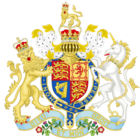Oxford University Act 1854 facts for kids
| Act of Parliament | |

|
|
| Long title | An Act to make further Provision for the good Government and Extension of the University of Oxford, of the Colleges therein, and of the College of Saint Mary Winchester. |
|---|---|
| Citation | 17 & 18 Vict. c. 81 |
| Dates | |
| Royal assent | 7 August 1854 |
| Text of statute as originally enacted | |
The Oxford University Act 1854 was an important law passed by the Parliament of the United Kingdom in 1854. It changed how the famous University of Oxford in England was managed. This Act helped to make the university more modern and open to more students. It is sometimes called the Oxford University Reform Act 1854 because it brought many important reforms.
Contents
What the Act Did
The Oxford University Act 1854 made big changes to how Oxford University was run.
New Leadership for Oxford
The Act created a new main group to run the university called the Hebdomadal Council. This council became the most important decision-making body. Most full-time teachers and researchers (called academic staff) were given the right to vote on who was on this council. This made the university's leadership more fair and representative. In the year 2000, the Hebdomadal Council was replaced by the University Council.
Opening Doors to More Students
Before this Act, students who wanted to attend Oxford University had to pass a religious test. They had to agree with the beliefs of the Church of England. The 1854 Act removed this rule. This meant that students who were not part of the Church of England could now join the university. This change allowed many more people, including many Scots, to study at Oxford.
Other Important Changes
The Act also set up special Commissioners. Their job was to manage the university's money and old financial gifts (called endowments). These changes helped to make the university's finances clearer.
The new law also reduced the power of the heads of the individual colleges within Oxford. It gave more power to the central university leadership. Also, teachers and researchers (called Dons) no longer had to be priests or in Holy Orders. This meant more people could become university staff.
How the Act Came About
In 1850, a special group was formed by Parliament to look at Oxford University's old rules. The first idea for the new law, suggested by Lord John Russell, was quite small. However, groups of people who disagreed with the religious tests (called dissenters) worked together. They threatened to stop the law from passing unless the religious tests were removed. This pressure helped to make the Act more far-reaching.
Theological Tests Debate
The idea of removing religious tests was not new. James Heywood, a Member of Parliament, spoke about this in a debate. He explained that the issue had been discussed in Parliament many times before.
For example, in 1772, a group of religious leaders asked for changes to religious oaths. In 1834, a law to remove these tests at Oxford and Cambridge passed in one part of Parliament but failed in the other. Because this law failed, the University of London was created. This new university did not require religious tests.
Even though the University of London was successful, many people still felt that students should be able to attend Oxford and Cambridge without religious tests. The Duke of Wellington, who was in charge of Oxford University at one point, tried to get the university to change these oaths. He suggested that students should just say they were members of the Church of England, instead of agreeing to the Thirty-nine Articles (a set of beliefs). However, the university's main council rejected his idea.
Heywood believed that the university itself, which was mainly run by religious leaders, would not make these changes. He felt it was Parliament's job to step in and make sure the university was open to everyone.
See also
- Universities Tests Act 1871

